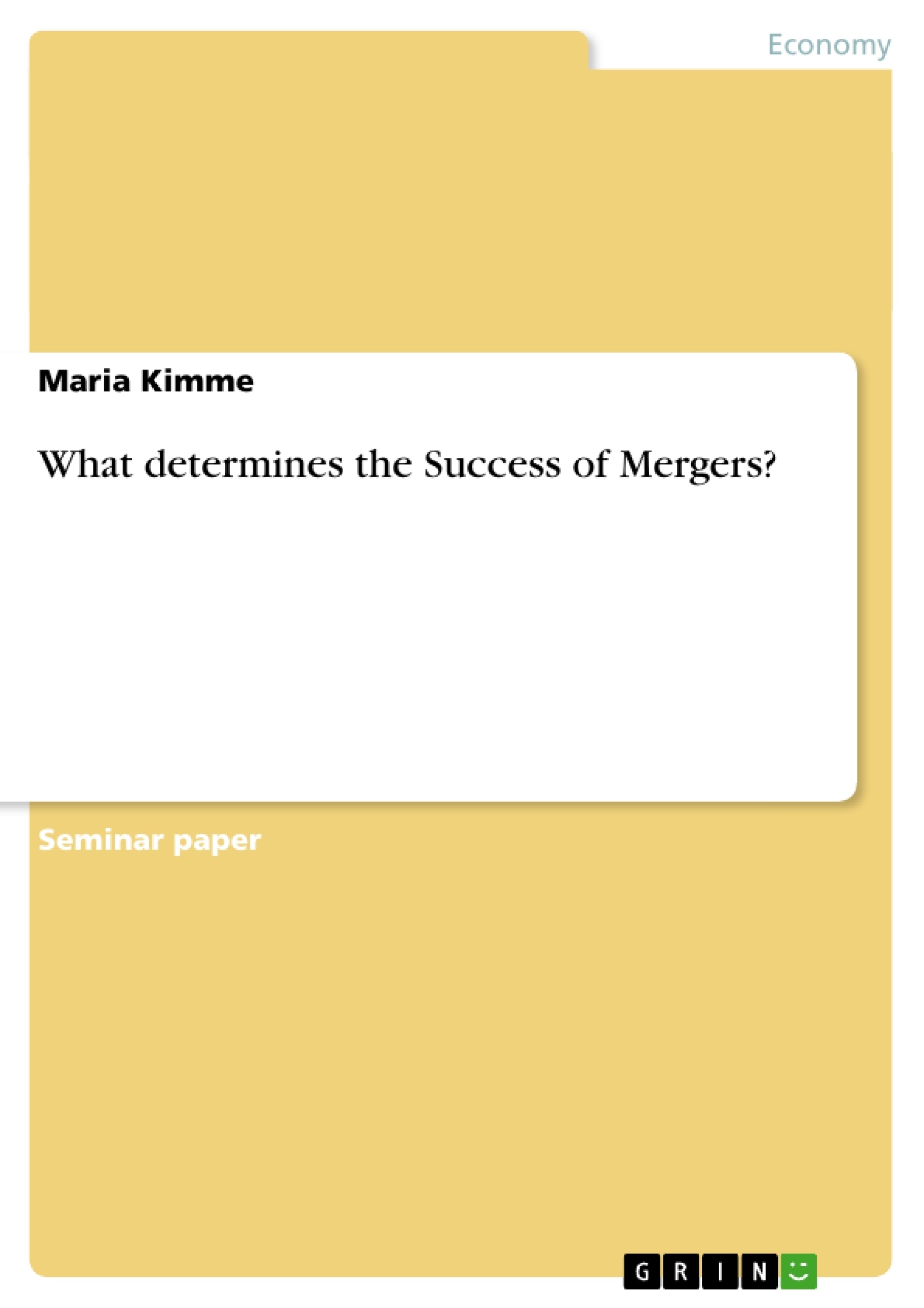Every week, if not more often, the financial press reports intentions of firms to merge. If we hear the notation “mergers and acquisitions”, various names of companies will come to our minds, such as Mannesmann and Vodafone, Volkswagen and Audi, Daimler-Benz and Chrysler, to name just a few. Some of those can be considered successful, while others represented a disaster to stakeholders. Employees were laid off, plants closed, supplier relationships cancelled, customers confused, and, most of all, shareho lder value destroyed. In 2000, 83% of all mergers did not generate benefits to the stockholders, 50% even produced losses. This situation gives rise to many questions. Mainly, it has to be clarified, what the underlying reasons of those failures to create stockholder value are. Connected with this is the discussion about the corporate cultures of the two merging companies and the influence of their differences on the outcome of the merger. Especially interesting in this matter, is the distinction between hard and soft facts in the merging companies. The underlying patterns will be clarified and the connection will be explained with the example of the fusion of Daimler-Benz AG and Chrysler Corp. on November 17 th in 1998. This paper will continue with the definition and description of hard and soft facts to be considered when approaching a possible merger. It will describe, how the soft facts can overshadow any possible benefit arising from the hard facts, if managed poorly. After that, some solutions will be provided, in order to overcome arising difficulties. To underline those theoretical thoughts, the case study of DaimlerChrysler will be provided and applied. Concluding, this paper will provide an answer on the above mentioned question.
Inhaltsverzeichnis (Table of Contents)
- Introduction
- The Determinants of a Merger's Success
- The Consideration of "Hard Facts"
- The Consideration of "Soft Facts"
- Overcoming Difficulties
- The Merger between Daimler-Benz AG and Chrysler Corp.
- The Due Diligence before the Merger
- The Integration After the Merger
- The Effects of the Merger on DaimlerChrysler's Stakeholders
- Conclusion
Zielsetzung und Themenschwerpunkte (Objectives and Key Themes)
This paper aims to investigate the factors that determine the success of mergers, focusing on the case of Daimler-Benz AG and Chrysler Corp. The paper explores the role of both “hard facts,” such as financial compatibility and market considerations, and “soft facts,” such as corporate culture and integration challenges, in determining the outcome of mergers.
- The importance of due diligence in merger decisions
- The impact of corporate culture on merger success
- The role of integration in overcoming difficulties
- The influence of mergers on stakeholders
- The challenges of creating value through mergers
Zusammenfassung der Kapitel (Chapter Summaries)
- Introduction: The chapter outlines the widespread occurrence of mergers and acquisitions, highlighting both successful and unsuccessful cases. It raises key questions about the factors influencing merger success, particularly the role of corporate culture and the distinction between “hard facts” and “soft facts” in merging companies. The merger of Daimler-Benz AG and Chrysler Corp. serves as a case study to illustrate these concepts.
- The Determinants of a Merger's Success: This chapter focuses on the factors that contribute to a successful merger. It introduces the concept of due diligence and its role in examining the strengths, weaknesses, opportunities, and threats of merging companies. The chapter also discusses the importance of considering "hard facts," such as financial compatibility and market considerations, and the potential impact of mergers on stakeholders.
- The Consideration of “Hard Facts”: This section elaborates on the "hard facts" that should be taken into account before pursuing a merger. These include factors such as the compatibility of the companies involved, the effects on the industry, the modification of company structures, and the impact on stakeholders.
- The Consideration of “Soft Facts”: This section delves into the importance of “soft facts,” particularly corporate culture. It highlights the potential for clashes between the cultures of merging companies, which can hinder the success of the merger. The chapter emphasizes that integrating corporate cultures is essential for achieving a positive outcome.
- Overcoming Difficulties: This section discusses strategies for overcoming challenges related to integrating corporate cultures. The key principle is promoting a new, combined corporate culture that leverages the strengths of both merging companies. This requires creating trust and relationships between employees from both organizations and implementing effective integration processes.
- The Merger between Daimler-Benz AG and Chrysler Corp.: This chapter introduces the Daimler-Benz AG and Chrysler Corp. merger as a case study. It explores the due diligence process before the merger and the integration challenges faced afterward. The chapter analyzes the effects of the merger on stakeholders, including employees, customers, suppliers, and shareholders. The integration of the corporate cultures is the main focus of this chapter.
Schlüsselwörter (Keywords)
This paper explores the complexities of mergers and acquisitions, focusing on the key themes of due diligence, corporate culture, integration, stakeholder impact, and the distinction between "hard facts" and "soft facts." The Daimler-Benz AG and Chrysler Corp. merger provides a valuable case study for examining these concepts in a real-world context.
- Quote paper
- Maria Kimme (Author), 2001, What determines the Success of Mergers?, Munich, GRIN Verlag, https://www.grin.com/document/34935



